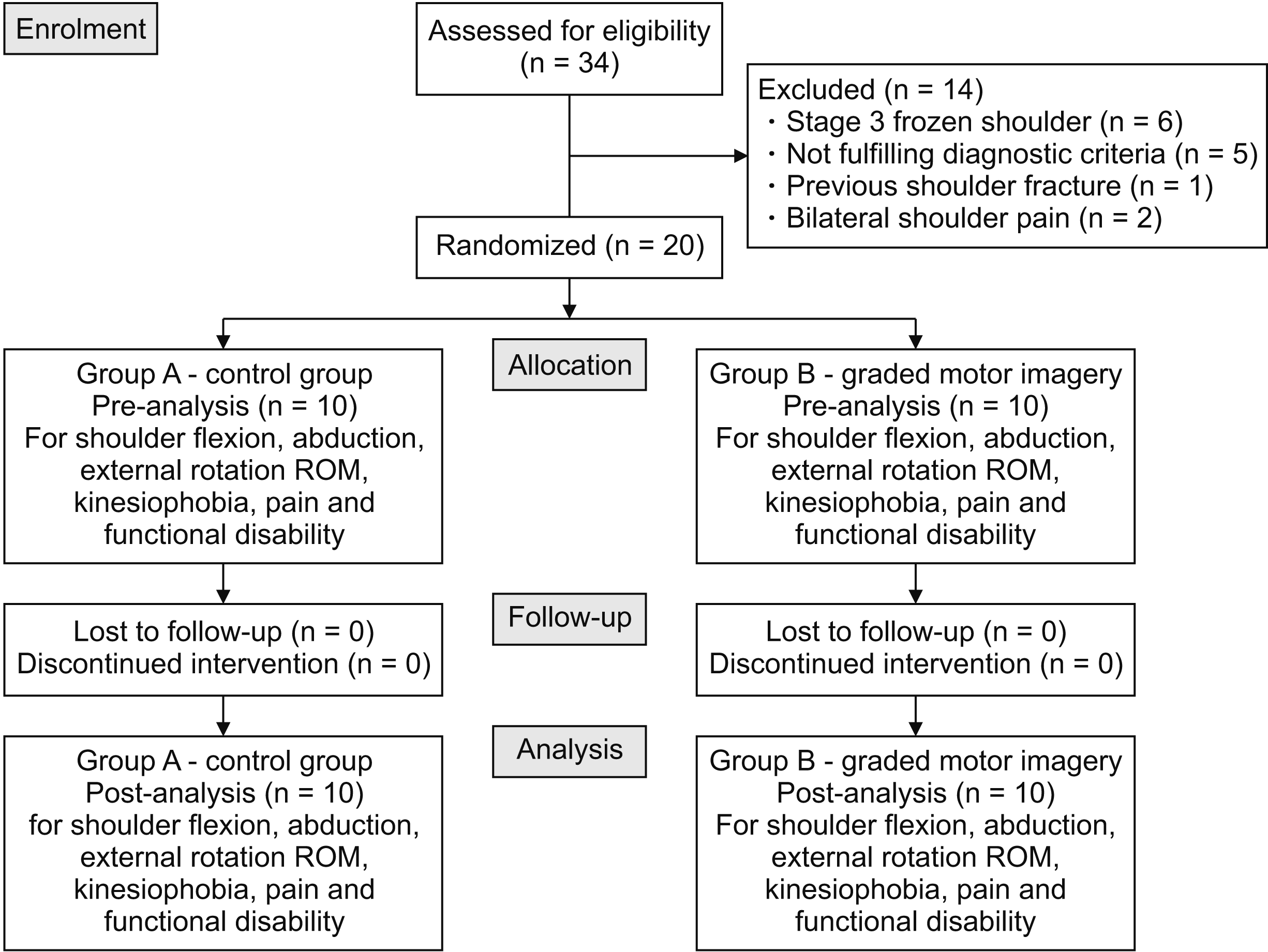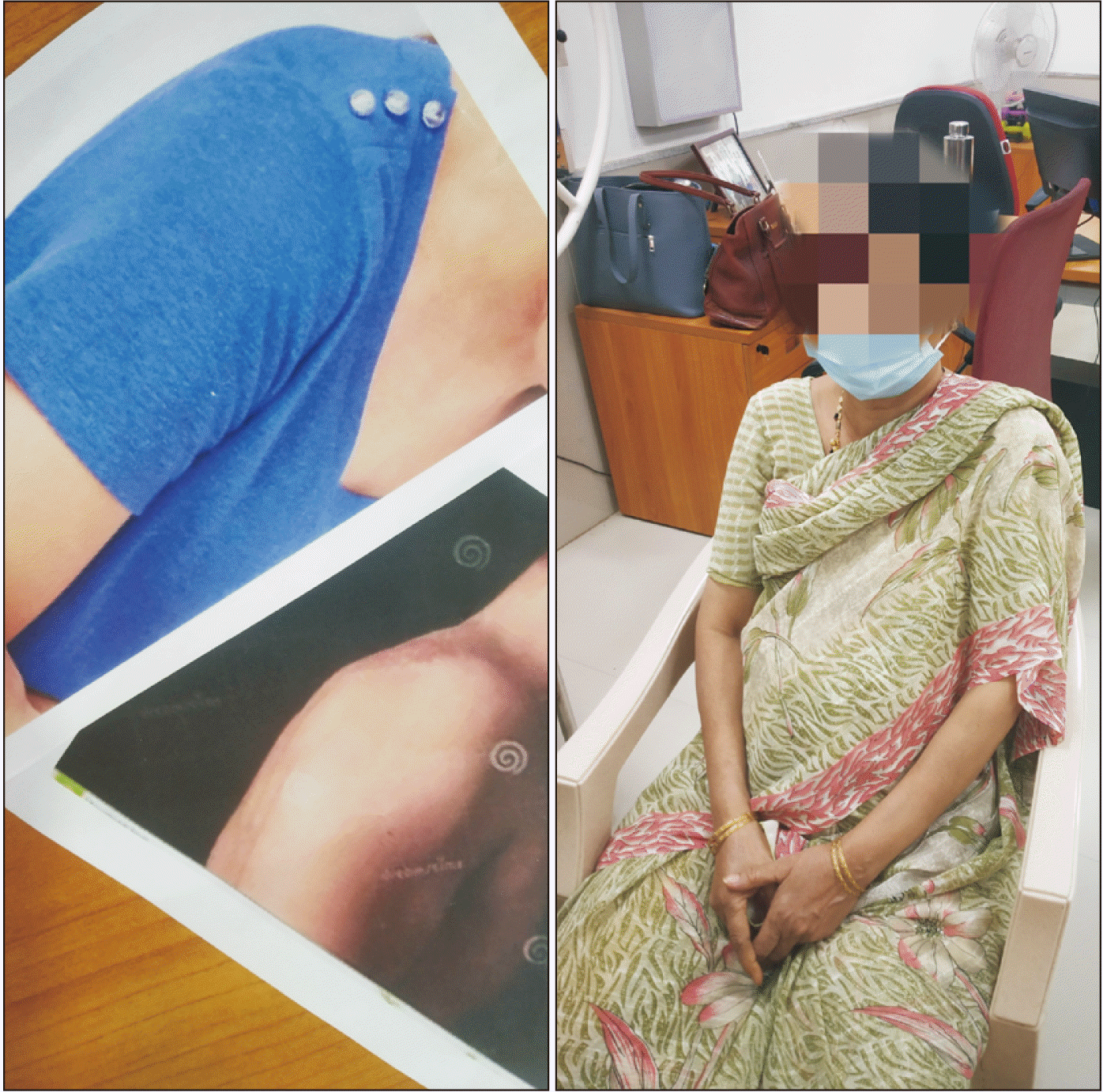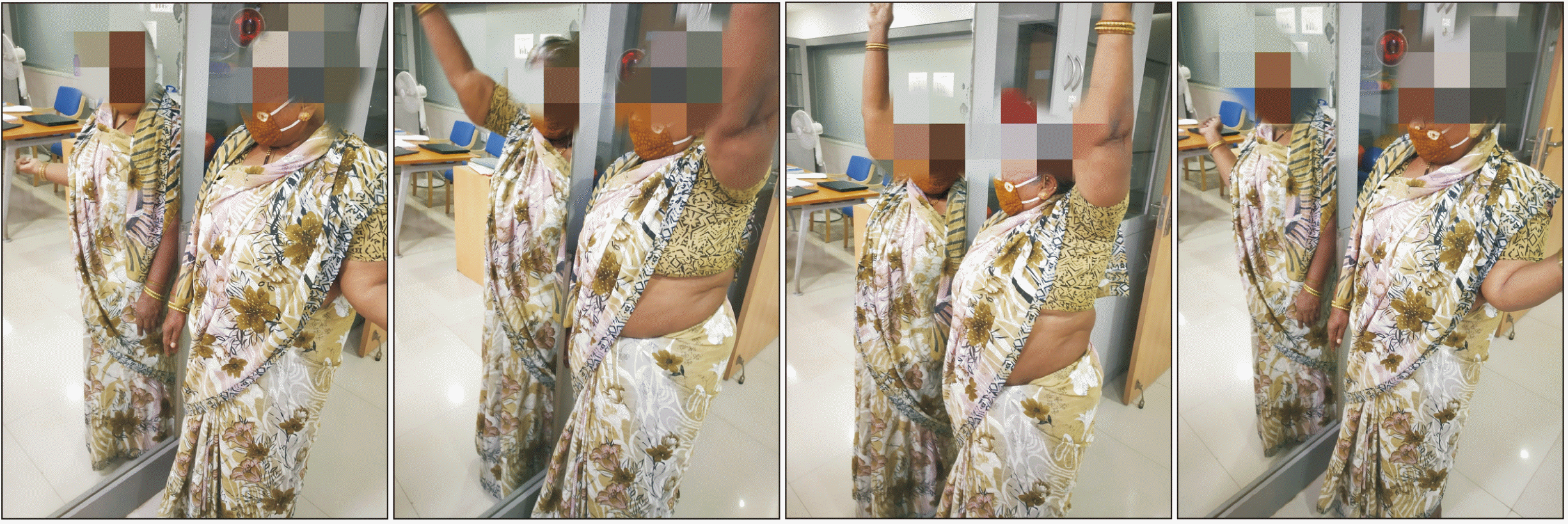4. Kelley MJ, McClure PW, Leggin BG. 2009; Frozen shoulder: evidence and a proposed model guiding rehabilitation. J Orthop Sports Phys Ther. 39:135–48. DOI:
10.2519/jospt.2009.2916. PMID:
19194024.

5. Brue S, Valentin A, Forssblad M, Werner S, Mikkelsen C, Cerulli G. 2007; Idiopathic adhesive capsulitis of the shoulder: a review. Knee Surg Sports Traumatol Arthrosc. 15:1048–54. DOI:
10.1007/s00167-007-0291-2. PMID:
17333122.

6. Page P, Labbe A. 2010; Adhesive capsulitis: use the evidence to integrate your interventions. N Am J Sports Phys Ther. 5:266–73. PMID:
21655385. PMCID:
PMC3096148.
8. Kelley MJ, Shaffer MA, Kuhn JE, Michener LA, Seitz AL, Uhl TL, et al. 2013; Shoulder pain and mobility deficits: adhesive capsulitis. J Orthop Sports Phys Ther. 43:A1–31. DOI:
10.2519/jospt.2013.0302. PMID:
23636125.

10. Jain TK, Sharma NK. 2014; The effectiveness of physiotherapeutic interventions in treatment of frozen shoulder/adhesive capsulitis: a systematic review. J Back Musculoskelet Rehabil. 27:247–73. DOI:
10.3233/BMR-130443. PMID:
24284277.

11. Louw A, Puentedura EJ, Reese D, Parker P, Miller T, Mintken PE. 2017; Immediate effects of mirror therapy in patients with shoulder pain and decreased range of motion. Arch Phys Med Rehabil. 98:1941–7. DOI:
10.1016/j.apmr.2017.03.031. PMID:
28483657.

12. Sawyer EE, McDevitt AW, Louw A, Puentedura EJ, Mintken PE. 2018; Use of pain neuroscience education, tactile discrimination, and graded motor imagery in an individual with frozen shoulder. J Orthop Sports Phys Ther. 48:174–84. DOI:
10.2519/jospt.2018.7716. PMID:
29257926.

15. Bowering KJ, O'Connell NE, Tabor A, Catley MJ, Leake HB, Moseley GL, et al. 2013; The effects of graded motor imagery and its components on chronic pain: a systematic review and meta-analysis. J Pain. 14:3–13. DOI:
10.1016/j.jpain.2012.09.007. PMID:
23158879.

16. Dilek B, Ayhan C, Yagci G, Yakut Y. 2018; Effectiveness of the graded motor imagery to improve hand function in patients with distal radius fracture: a randomized controlled trial. J Hand Ther. 31:2–9.e1. DOI:
10.1016/j.jht.2017.09.004. PMID:
29122370.

17. Anderson B, Meyster V. 2018; Treatment of a patient with central pain sensitization using graded motor imagery principles: a case report. J Chiropr Med. 17:264–7. DOI:
10.1016/j.jcm.2018.05.004. PMID:
30846919. PMCID:
PMC6391225.

18. Hayes K, Walton JR, Szomor ZR, Murrell GA. 2001; Reliability of five methods for assessing shoulder range of motion. Aust J Physiother. 47:289–94. DOI:
10.1016/S0004-9514(14)60274-9. PMID:
11722295.

20. Hawker GA, Mian S, Kendzerska T, French M. 2011; Measures of adult pain: Visual Analog Scale for Pain (VAS Pain), Numeric Rating Scale for Pain (NRS Pain), McGill Pain Questionnaire (MPQ), Short-Form McGill Pain Questionnaire (SF-MPQ), Chronic Pain Grade Scale (CPGS), Short Form-36 Bodily Pain Scale (SF-36 BPS), and Measure of Intermittent and Constant Osteoarthritis Pain (ICOAP). Arthritis Care Res (Hoboken). 63 Suppl 11:S240–52. DOI:
10.1002/acr.20543. PMID:
22588748.
21. Boonstra AM, Schiphorst Preuper HR, Reneman MF, Posthumus JB, Stewart RE. 2008; Reliability and validity of the visual analogue scale for disability in patients with chronic musculoskeletal pain. Int J Rehabil Res. 31:165–9. DOI:
10.1097/MRR.0b013e3282fc0f93. PMID:
18467932.

22. Tveitå EK, Ekeberg OM, Juel NG, Bautz-Holter E. 2008; Responsiveness of the shoulder pain and disability index in patients with adhesive capsulitis. BMC Musculoskelet Disord. 9:161. DOI:
10.1186/1471-2474-9-161. PMID:
19055757. PMCID:
PMC2633286.

23. Roach KE, Budiman-Mak E, Songsiridej N, Lertratanakul Y. 1991; Development of a shoulder pain and disability index. Arthritis Care Res. 4:143–9. DOI:
10.1002/art.1790040403. PMID:
11188601.

24. Panchal DN, Eapen C. 2015; Effectiveness of end-range mobilization and interferential current or stretching exercise and moist heat in treatment of frozen shoulder- a randomized clinical trial. Int J Curr Res Rev. 7:21–6.
http://eprints.manipal.edu/143690/.
26. Gurudut P, Jaiswal R. 2020; Comparative effect of graded motor imagery and progressive muscle relaxation on mobility and function in patients with knee osteoarthritis: a pilot study. Altern Ther Health Med. AT6436. PMID:
33128533.
28. Luque-Suarez A, Martinez-Calderon J, Navarro-Ledesma S, Morales-Asencio JM, Meeus M, Struyf F. 2020; Kinesiophobia is associated with pain intensity and disability in chronic shoulder pain: a cross-sectional study. J Manipulative Physiol Ther. 43:791–8. DOI:
10.1016/j.jmpt.2019.12.009. PMID:
32829946.

29. Yap BWD, Lim ECW. 2019; The effects of motor imagery on pain and range of motion in musculoskeletal disorders: a systematic review using meta-analysis. Clin J Pain. 35:87–99. DOI:
10.1097/AJP.0000000000000648. PMID:
30222613.






 PDF
PDF Citation
Citation Print
Print






 XML Download
XML Download